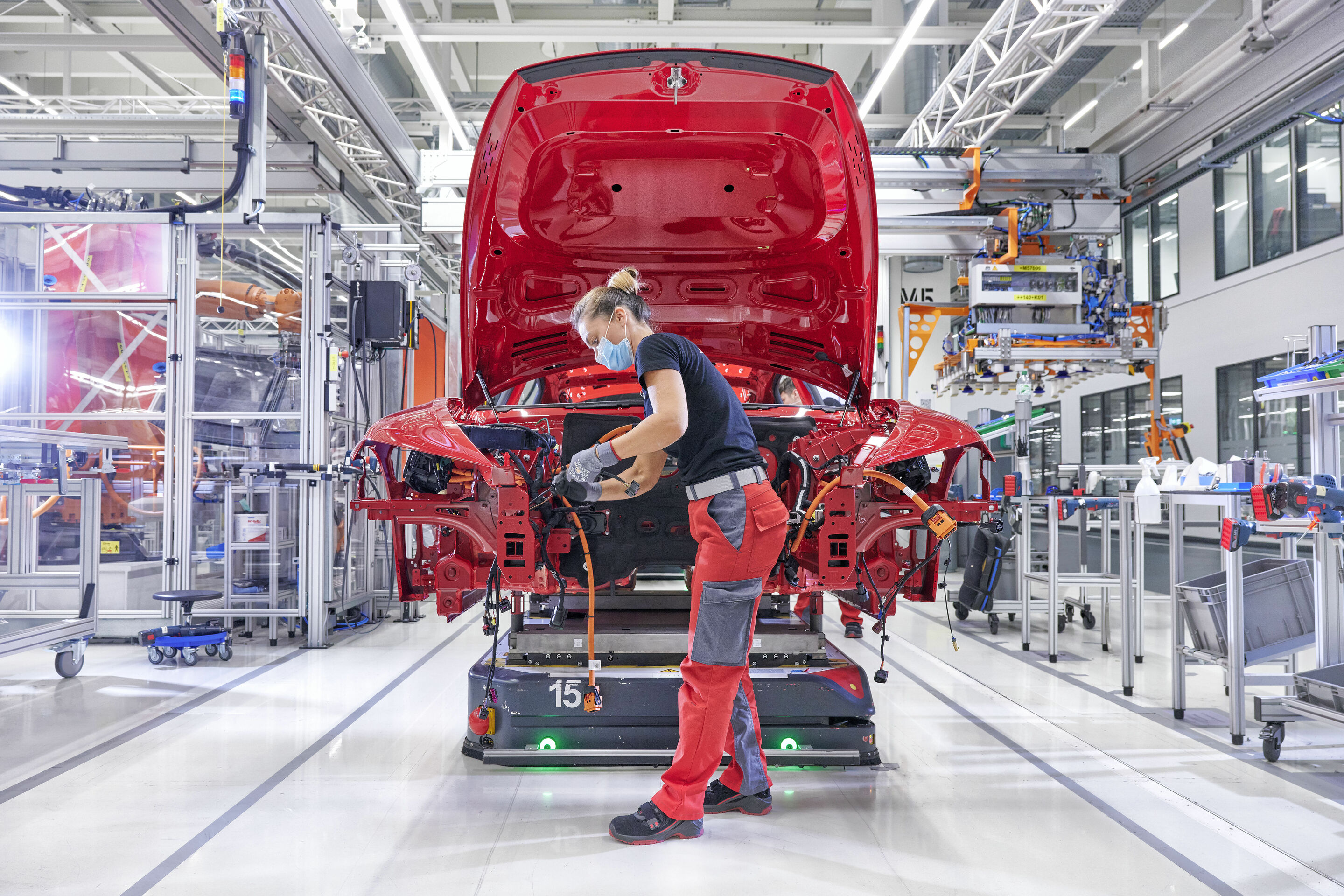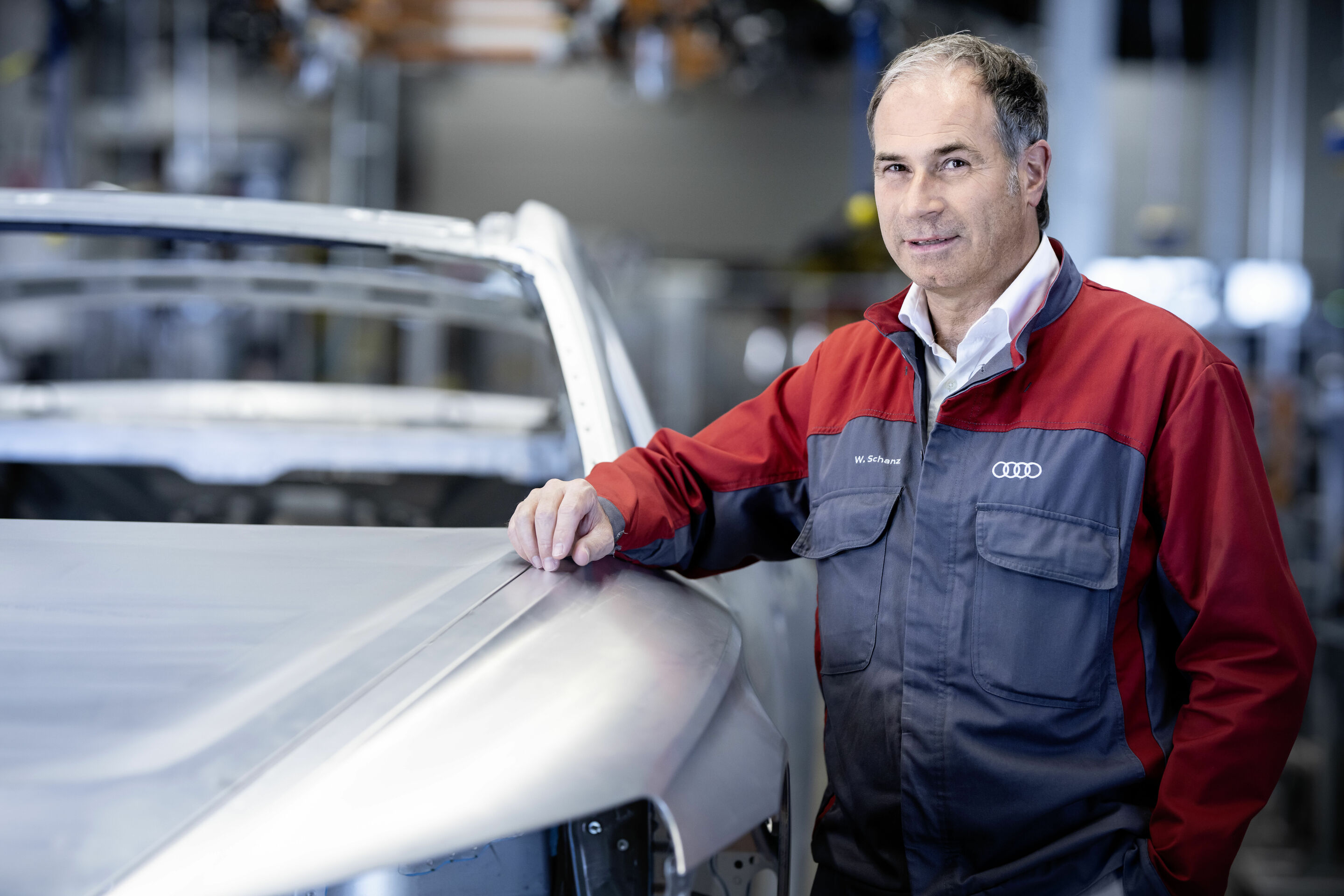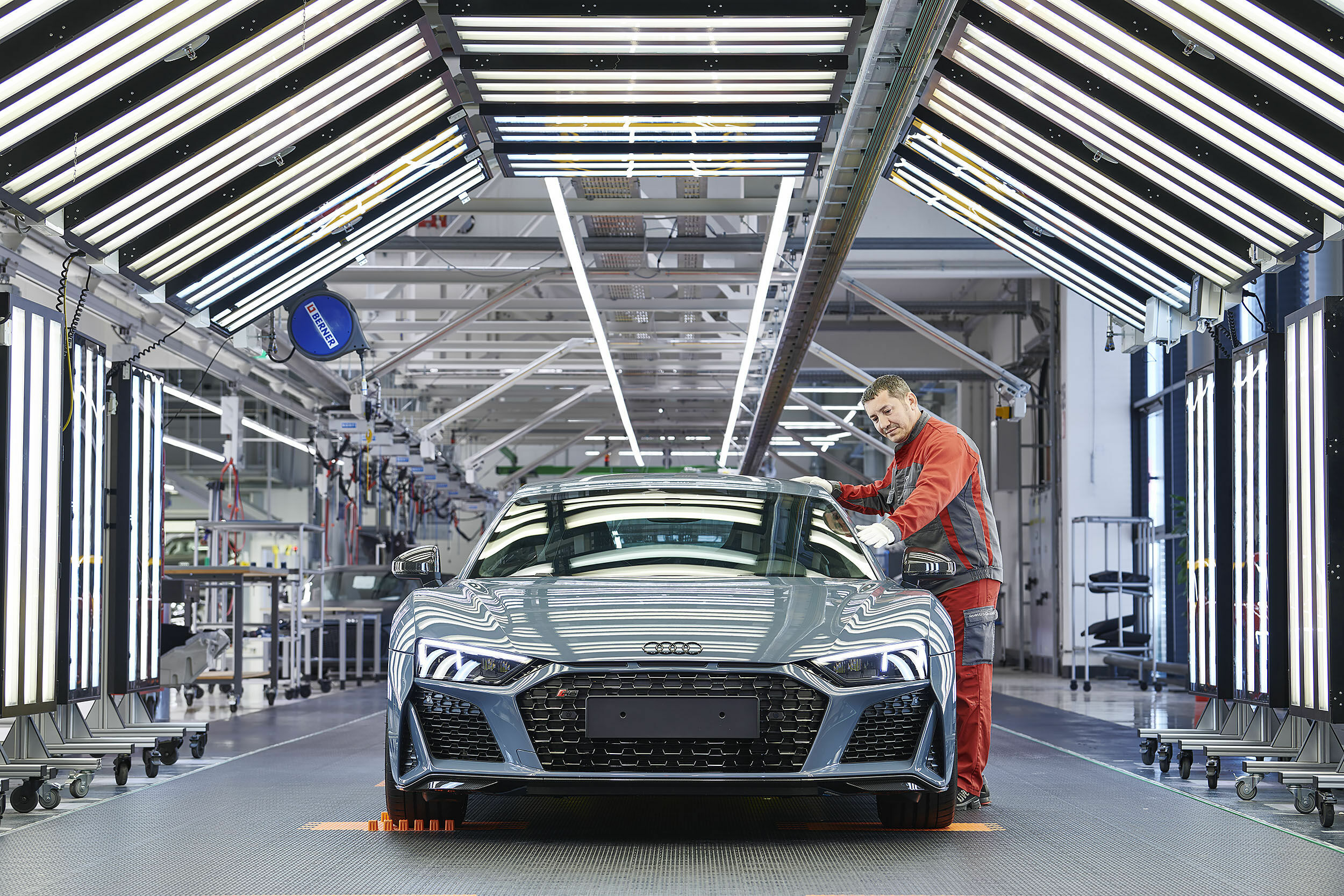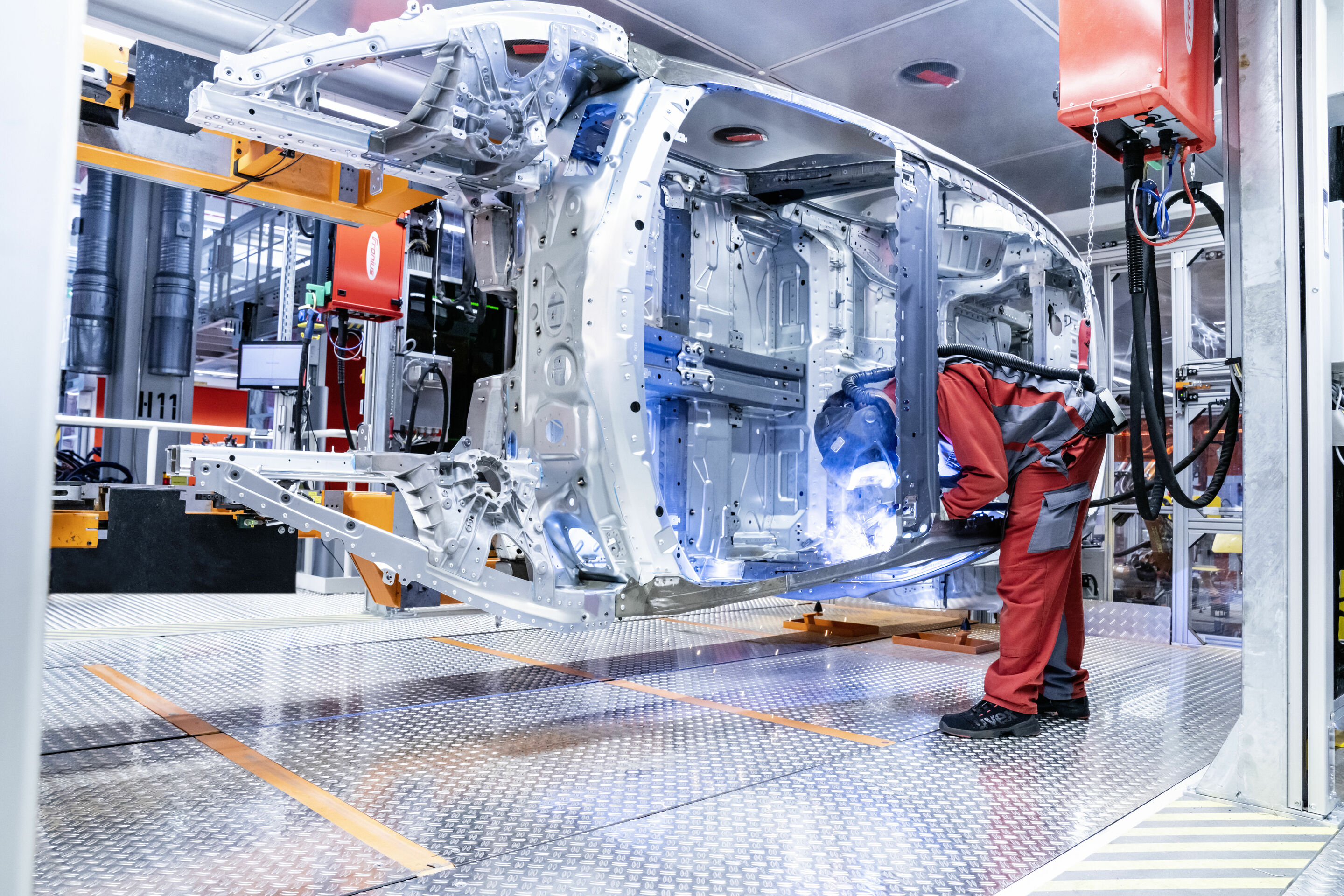Manufacturing and smart factory: Unique cohesion
Back to overview
“We have retained the craftsmanship from the R8’s manufacturing and added new and intelligent technologies. And our employees immediately transferred all their passion from the R8 to the e-tron GT.”
Wolfgang Schanz, Production Manager Audi Böllinger Höfe
Audi Sport GmbH produces the Audi R8 and the two all-electric models, the Audi e-tron GT quattro and Audi RS e-tron GT, at the Böllinger Höfe industrial park in Heilbronn. The small batch production of the Audi subsidiary’s two most powerful and sporty vehicles, not far from its Neckarsulm headquarters, is unique in the Group. “We have managed to put two completely different vehicles on one assembly line: The high-performance R8 sports car with a V10 combustion engine was joined by the e-tron GT, which is an all-electric Gran Turismo,” says Wolfgang Schanz, production manager at Böllinger Höfe.
Planned to be highly flexible from the outset, Audi Sport GmbH is merging the best of two worlds at the end of 2020. “We have retained the craftsmanship from the R8’s manufacturing and added new and intelligent technologies. And our employees immediately transferred all their passion from the R8 to the e-tron GT,” Wolfgang Schanz continues. The independent Böllinger Höfe production facility came into being in 2014 in view of the great sales success of the road and motorsport versions of the Audi R8. Until then, quattro GmbH had built the super sports car within the high-volume structures of the main Neckarsulm plant, distributed across various production halls.
In order to integrate the production of the two e-tron GT models, Audi Sport GmbH expanded and modernized the Böllinger Höfe facility in 2019/2020 – for the most part during ongoing operations. State-of-the-art facilities were built in the body shop and assembly areas. Production competencies were expanded in the areas of electrification, automation and digitalization. This created a unique cohesion of craftsmanship and a smart factory on a production area of around 40,000 square meters. “The R8 was incredibly successful right from the start, and at the same time, it was also highly complex in terms of production; we pushed the limits of what was possible here. Our vision in 2012 was therefore to create a flexible manufacturing facility for quattro GmbH that offers ideal conditions for such highly emotional and highly individualized limited-series vehicles. Today’s successful integration of the e-tron GT into the R8’s manufacturing shows us that we helped lay the foundation for this back in 2012, when we designed the facility,” says Jochen Wagner, Head of Production at quattro GmbH from 2011 to 2016.
The bodies of the Audi R8 and the Audi e-tron GT are largely manufactured separately: While the mid-engine sports car is built almost exclusively by hand, body construction for the e-tron GT is highly automated. Final assembly of the two performance models takes place on the same assembly line. For the integration of the e-tron GT, assembly was expanded by 20 to 36 work cycles. All employees working in production at Böllinger Höfe are equally proficient in the manufacturing steps of the R8 and the e-tron GT. “We have taken advantage of the opportunities offered by digitization and established many new methods. This starts with the planning of the assembly processes, which has been carried out virtually in many areas,” says production manager Schanz. “In the body shop, for example, we have introduced correlation-free measurement by using digital applications. And assembly aids from the 3D printer also proved to be great assets right away.”
Audi Sport GmbH also builds the chassis for all of the GT racing models of the R8 at the Böllinger Höfe facility in Heilbronn. Thereafter, the most powerful variants of the high-performance sports car are completed with specific components for use on the race track in the Audi Sport customer racing workshop in the Biberach district of Heilbronn and finished for delivery to customers.
Production in the Böllinger Höfe is already CO₂-neutral. Audi uses green electricity and heat from renewable sources – an important milestone for Audi and the Neckarsulm facility. The delivery of the e-tron GT to customers in Europe and the United States is also CO2-neutral in terms of the overall process. Audi offsets CO2 emissions that cannot currently be avoided through renewable energy sources with carbon credits from certified climate conservation projects. Audi is thus making an important contribution to Mission:Zero – the premium manufacturer’s environmental program for consistently sustainable production.



